
Many people have difficulty in telling deciduous trees apart in the winter without the leaves. This is unfortunate, as there are several ways to recognize winter trees. At times, it may even be easier. Here are a few useful things to observe. To learn more, get a good book such as, John Farrar’s “Trees in Canada.”
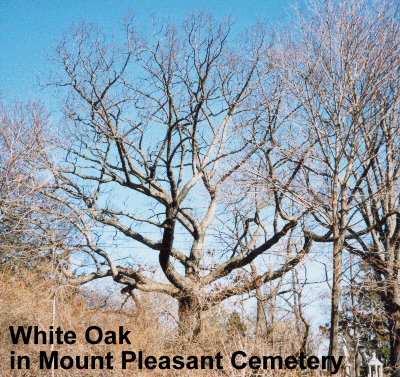
Useful signs include: shape or form, branching habit, buds, bark, colour, fruit, and even dead leaves on the ground. These frequently have to be used together. For example, if one finds White Oak leaves on the ground, look closely at the bark and branching habit of nearby trees to pick out the individual White Oak.
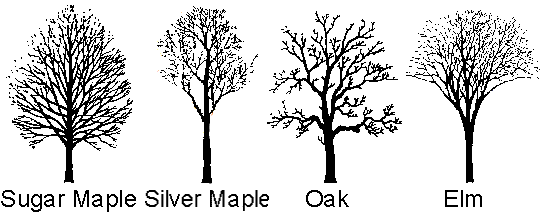
Form is most useful at a distance, but quite variable. If you know that a specific collection of species is present, such as Sugar Maple, Silver Maple, Oak and Elm, then the shape or form of the individuals, will help. On the other hand, if Norway Maple is in the mix, some other characteristic, bark (for large trees) or buds (for smaller ones) is required to tell it from Sugar Maple.
On smaller trees, look at the the terminal buds. Those of Sugar Maple twig are sharp-pointed, whereas the Norway Maple has blunt buds. The bark of a large Norway Maple has fine neat ridges, but the bark of a Sugar Maple has firm irregular ridges that usually curl outward along one side.
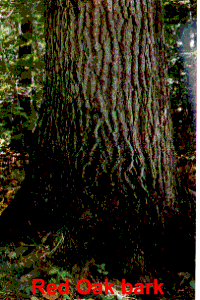
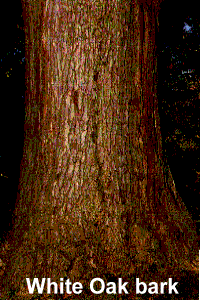
Red Oak and White Oak have distinctive barks that are easily used, even in summer, to identify the species. Why peer high in the air to pick out a leaf of a large Oak when the bark is right there. The bark of small Red Oak, even up to 30 cm in diameer, is smooth and on larger trees, the bark of branches is smooth much farther from the tips than White Oak. The bark of White Oak is more variable; some will have small neat ridges while on others the bark is quite shaggy approaching that of Silver Maple. White Oak bark is also lighter. While bark can help. Just remember that the bark of smaller younger trees can be very different from that of larger older ones.

The yellow colour of the Weeping Willow twigs, the red of the Dogwood shoots and the white bark of the Paper Birch are give-aways. Several trees found in Toronto often carry clusters of fruit for most of the winter.

Manitoba Maple
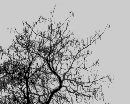
Catalpa
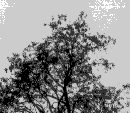
Black Locust

Tree of Heaven
frequently carry quantities of fruit throughout the winter. Fruit of others such as some Crab Apples, Ash, Linden and Mountain Ash will have fruit hanging in the early winter, but birds and squirrels will strip them; so, as the winter deepens, these disappear.
